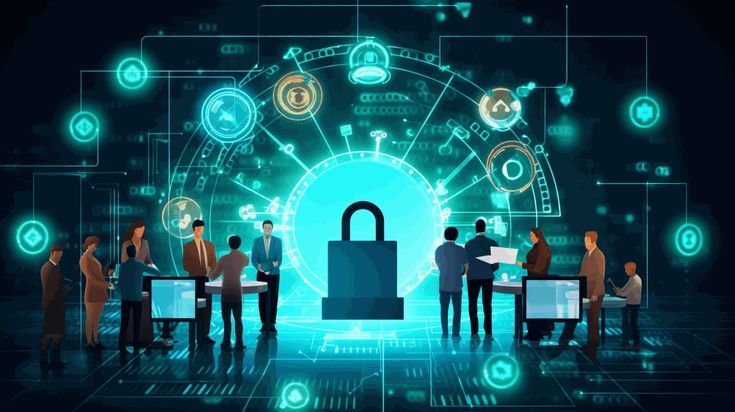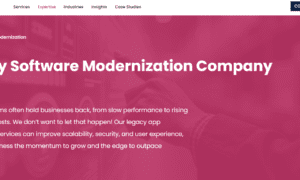If you think hackers only go after big companies with millions in the bank, think again. These days, small and mid-sized businesses are just as likely to get hit – sometimes even more so, because they’re easier targets. James Assali, a business leader with multiple companies in California, has seen how one small mistake can lead to big problems. But he also knows this: most of those problems can be avoided with a bit of common sense and solid training.
And no, you don’t need to be an IT expert to protect your business.
Let’s talk about how your team – the people you work with every day – can actually become your first line of defense with the right approach to cybersecurity awareness training.
Why Most Cyber Attacks Happen (It’s Not What You Think)
When people think about cybersecurity, they picture hackers in dark rooms typing code to break into systems. That’s not wrong, but the truth is a lot simpler – and scarier. Most breaches happen because someone on the inside makes a mistake. Not on purpose, just by clicking a bad link or trusting the wrong email.
Here’s how it usually goes:
- Someone gets an email that seems like it’s from a coworker or vendor.
- It asks them to click a link, download something, or share a password.
- They trust it… and that’s it. The door’s wide open.
James Assali points out that this kind of thing happens all the time, and it’s not because people are careless. It’s just that no one ever showed them what warning signs to look for.
What Is Cybersecurity Awareness Training, Really?
Let’s strip away the jargon. Cybersecurity awareness training just means helping your team understand the common tricks used by scammers – and how to avoid falling for them.
You don’t need a technical background. You don’t need fancy software. You just need to:
- Show real examples of scams and phishing emails.
- Explain what to do when something seems off.
- Practice – yes, practice – handling situations before they happen.
James Assali compares it to locking the front door of your house. “You don’t have to be a locksmith,” he says. “You just need to know that it needs to be locked – and how to check it.”
The Human Factor: Where Real Security Starts
Too many companies focus only on technology – firewalls, antivirus software, complicated systems. That’s all important, but it won’t matter if someone accidentally hands over the keys.
Here’s what James Assali recommends to strengthen the human side of your security:
1. Make Training Part Of The Culture
Don’t make it some boring thing you only do once a year. Just find small, simple ways to talk about it regularly.
- Share short tips in team meetings.
- Post reminders near computers or in chat apps.
- Make it feel normal to ask questions when something seems weird.
2. Keep It Simple And Clear
Skip the technical language. The simpler you explain it, the easier it is for people to get and remember. Talk to them like you’d talk to a friend or family member.
Example:
Instead of “Beware of malicious email payloads,” try
“Don’t open attachments unless you’re 100% sure who sent them.”
3. Train Everyone – Not Just The Tech People
Receptionists, assistants, interns, managers – everyone who uses email, messages clients, or accesses company files needs to know the basics. Hackers don’t care about job titles.
Long-Term Protection With Cybersecurity Awareness Training
Here’s cybersecurity awareness training for small business teams. This isn’t just about avoiding one-time problems. It’s about building habits across your whole team that will keep your business safer in the long run.
Some real-world benefits of ongoing training:
- Fewer costly mistakes – Employees will pause and check before they click.
- More confident team – People won’t feel lost or embarrassed when they spot something suspicious.
- Better compliance – If you work in finance, health, or any regulated industry, training also keeps you on the right side of the law.
James Assali emphasizes this part the most: “The goal isn’t to scare your team. It’s to make them feel empowered.”
What To Cover In Your Training Sessions
Not sure where to begin? This kind of simple step can make all the difference:
How To Know A Phishing Email
- Look for weird sender addresses or grammar mistakes.
- If something feels off, don’t just click it – take a second to make sure it’s legit
- When in doubt, double-check with the person directly.
What To Do If Something Seems Off
- Report it immediately – don’t sit on it.
- It’s not a big deal if you’re unsure – just speak up early so it doesn’t turn into a bigger mess later.
- If something doesn’t look right, don’t forward it. Just ask someone or double-check – better safe than sending trouble to the whole team
Create A Habit Of Double-Checking
- Before entering passwords, check the site URL.
- Don’t reuse passwords across different accounts.
- Always log out of shared devices.
Use Free Resources (You Don’t Need a Huge Budget)
There are tons of free guides, videos, and tools out there. You can build a strong training program without spending thousands. You can even simulate fake phishing emails internally to test your team’s reactions – and use the results for learning, not punishment.
James Assali recommends keeping things approachable and real. “No one wants another lecture. They want to know how to protect themselves – and their job.
For more practical insights on how James thinks about security and data protection, check out this article:
Why Data Privacy Isn’t Optional in the Age of Copilot – A Practical Look with James Assali
Final Thought: It All Starts With People
Software helps, sure – but if your team doesn’t know what to watch out for, none of that matters. Cybersecurity is a group effort. And it starts by making sure your people – your team – feel confident, not confused.
James Assali puts it simply: “When your people are prepared, your business is protected.”
So don’t wait for something to go wrong. Start the conversation now. A small training goes a long way.
































